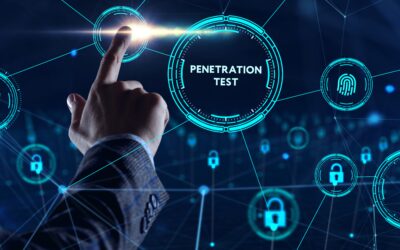With all the news about cyber espionage, organizations of all sizes are under even more pressure to maintain cybersecurity compliance. Increasing regulatory demands and progressively sophisticated threats mean that retail, healthcare, managed security, and virtually every other industry must proactively adopt measures to safeguard their operations. Failure to meet regulatory compliance requirements can result in significant fines, data breaches, and reputational damage which could threaten an organization’s viability.
Industry-Specific Cybersecurity Compliance Challenges
Each industry faces unique challenges in achieving and maintaining cybersecurity compliance. Each sector has distinct regulatory requirements, data protection needs, and security concerns, making a one-size-fits-all approach inappropriate. The following four examples help to illustrate this point.
- Retail: Safeguarding Payment Card Data
Retail is a prime target for cybercriminals because of the tremendous volume of payment card information it processes. PCI compliance is mandatory. However, implementing security measures in this industry is complicated because retailers typically have multiple physical and online sales channels. Regardless, retailers must ensure secure payment processing across all channels, protect their point-of-sale (POS) systems from malware, and regularly monitor for vulnerabilities. Then there are peak shopping seasons when the number of transactions and the risk of data breaches increase.
The key compliance challenges in retail are:
- Securing POS systems and payment gateways.
- Managing third-party vendors who have access to customer data.
- Ensuring consistent security practices across all retail locations and e-commerce platforms.
- Healthcare: Protecting Patient Information
The healthcare sector is highly regulated, with HIPAA setting stringent standards for electronic health records (EHR) and other patient data. Healthcare providers must safeguard sensitive information from external threats and manage internal risks, such as unauthorized access by staff. The complexity of healthcare IT environments, which often include a mix of legacy systems and modern technology, complicates the situation. On top of this, healthcare organizations must continually be prepared for potential audits and investigations, so compliance is a resource-intensive effort.
The key compliance challenges in healthcare are:
- Safeguarding EHRs and other sensitive patient data.
- Managing and securing a diverse range of medical devices and IT systems.
- Ensuring compliance with both federal and state-specific regulations.
- MSPs and MSSPs: Balancing Compliance and Client Security
MSPs and MSSPs have a dual responsibility. They must maintain both their compliance and that of their clients. This complexity is compounded by the diverse regulatory requirements across the industries they serve. MSPs and MSSPs must have a handle on data protection, implement robust security controls, and ensure compliance across multiple client environments. Any failure to maintain compliance can directly impact their clients, leading to reputational and financial consequences.
The key compliance challenges for MSPs and MSSPs are:
- Implementing consistent security policies and procedures across various client environments.
- Managing compliance for diverse clients, each with unique regulatory needs.
- Ensuring the security and integrity of sensitive client data, especially when integrating with multiple third-party tools and platforms.
- Financial Services: Meeting Stringent Regulatory Requirements
Financial institutions are subject to some of the most stringent cybersecurity regulations, such as those set by the Federal Financial Institutions Examination Council (FFIEC) and the Gramm-Leach-Bliley Act (GLBA). These organizations must protect huge volumes of sensitive financial data, including personally identifiable information (PII) and transaction records. This is a high-stakes industry, so compliance is a top priority. Institutions must implement comprehensive security measures, conduct regular risk assessments, and prepare for frequent regulatory audits.
The key compliance challenges in financial services are:
- Protecting PII and financial transaction data from sophisticated cyber threats.
- Implementing robust encryption and data masking techniques to safeguard sensitive information.
- Ensuring compliance with multiple, often overlapping, regulatory requirements.
Addressing industry-specific challenges like these requires custom compliance strategies and the support of experienced compliance experts. Organizations must conduct thorough risk assessments, deploy industry-relevant security solutions, and stay informed about evolving regulatory requirements.
Best Practices for Maintaining Compliance
Meeting and maintaining compliance with cybersecurity regulations is a continuous process. It requires a proactive and structured approach. The following are some key best practices to help organizations manage their compliance obligations:
- Conduct Regular Vulnerability Risk Assessments
Regularly running vulnerability risk assessments with a tool that will identify, prioritize, and mitigate security risks from a comprehensive business-centric standpoint is the foundation of a solid security posture and cybersecurity compliance. These assessments should be conducted at least annually, or whenever significant changes are made to the IT environment. - Implement Robust Access Controls
Role-based access controls (RBAC) are important for controlling who has access to sensitive information. Additionally, multi-factor authentication (MFA) and strong password policies help to prevent unauthorized access. - Continuous Monitoring and Logging
Regularly monitoring systems and networks allows organizations to detect and respond to suspicious activities in real-time. Automated tools for continuous monitoring and maintaining detailed logs of changes to critical systems and all access can help identify and mitigate potential threats before they can be exploited. - Employee Training and Awareness Programs
According to a report from Stanford, 88% of all cybersecurity issues are the result of human error. This points to the need for regular training sessions to educate employees about security policies, phishing scams, and proper data handling practices. Humans are human and will continue to make mistakes. However, a well-informed workforce can help prevent accidental breaches and ensure compliance with internal and external policies. - Develop and Test an Incident Response Plan
No security system is foolproof. So, a well-defined incident response plan is a must for every organization. This plan should outline the steps to be taken if a breach should occur. It should include communication strategies, containment procedures, and recovery actions. Having a plan is not enough. It needs to be tested and updated regularly to ensure your organization is prepared to respond quickly and effectively to any security incident. - Stay Updated on Regulatory Changes
Compliance standards evolve in response to new threats and tech advancements. This means organizations must stay informed and up-to-date with regulatory compliance and cybersecurity best practices. Subscribing to industry updates, participating in professional forums, and consulting with compliance experts can help keep your organization ahead of the curve. - Leverage Technology and Automation
Managing compliance manually can be daunting – especially for complex IT environments. Technology solutions, like compliance management platforms and automated scanning tools, are a must. They can simplify tracking cybersecurity compliance requirements, conducting audits, and generating reports. Additionally, automation reduces human error and ensures critical compliance tasks are consistently completed. - Working with Compliance Experts
Few organizations need to have full-time compliance experts on staff. However, having access to compliance experts is important for achieving compliance and creating processes to maintain it.
Integration and Management Concerns
Maintaining compliance requires much more than simply implementing security measures for many organizations. For them, seamlessly integrating those measures into their existing IT infrastructure is a must. Seamless integration is particularly challenging in complex environments where multiple systems, applications, and data sources must work together without compromising security or functionality.
Effective integration and system management are critical to achieving compliance, reducing operational disruptions, and ensuring a cohesive security posture.
Integrating compliance solutions with existing systems can be tough. A misaligned integration can create data silos, inconsistent security controls, and operational inefficiencies.
From a high-level perspective, the way to mitigate these issues is to leverage APIs, use automation for repetitive compliance tasks, and use a centralized management platform.
Third-party vendors who have access to sensitive data and systems pose another threat to compliance.
Vendors can be a potential weak link in the security chain and a significant risk in industries like healthcare and retail. Organizations with reliance on third-party vendors should implement vendor risk management programs and conduct regular audits to ensure their vendors adhere to security and compliance requirements.
Maintaining the integrity and availability of data is necessary for compliance.
Data must be protected from unauthorized access, loss, and corruption. Organizations can safeguard their data by implementing redundancy and backup solutions in addition to data encryption and masking.
Many organizations now rely on cloud services to store data and run applications. This adds another layer of complexity to compliance management.
Cloud environments present unique challenges for ensuring data security across different jurisdictions and managing access controls for various users.
Organizations must understand the shared responsibility model of cloud services. They cannot rely solely on their provider’s security. They must also implement their own controls and safeguards.
Finally, as organizations grow, so do their cybersecurity compliance needs. Their compliance strategies must be scalable and readily adapted to changing business and regulatory requirements.
Organizations must regularly review and update security policies and procedures to reflect business, technology, and regulatory changes. They must also select scalable cybersecurity compliance solutions like SAINT VRM to mitigate risks, protect your organization, and improve operational resilience.
By focusing on these issues, organizations can build a resilient security posture that adapts to evolving threats and regulatory requirements as the organization grows.
Final Thoughts
Achieving and maintaining cybersecurity compliance is a complex and ongoing process that demands a proactive approach to integrate robust security measures, address industry-specific challenges, and continuously adapt to evolving threats and regulations.
Ready to strengthen your compliance strategy? Contact Carson & SAINT today for expert guidance and the tools you need to achieve and maintain robust cybersecurity compliance.




0 Comments